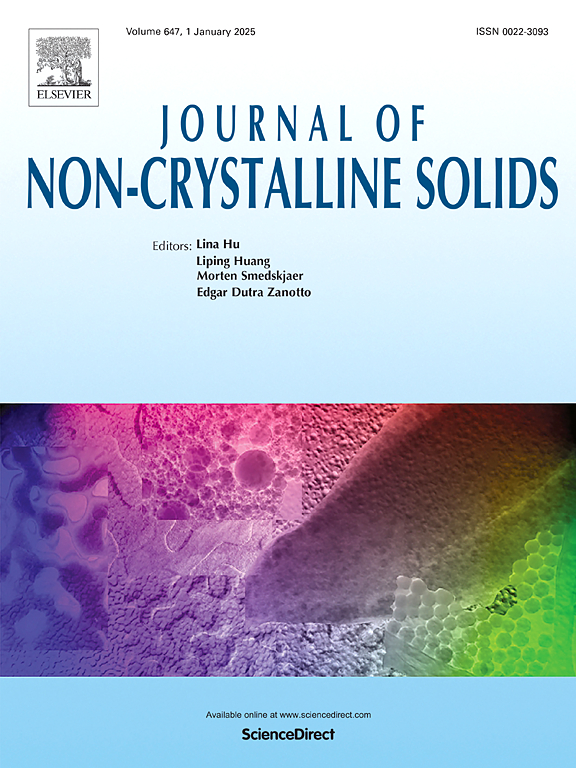Preparation of low-thermal-conductivity and high-strength GPTMS polymer cross-linked SiO₂ aerogels via a two-step modification method
IF 3.5
3区 材料科学
Q1 MATERIALS SCIENCE, CERAMICS
引用次数: 0
Abstract
Although recent studies on polymer cross-linking modification have improved the mechanical properties of SiO₂ aerogels, they often overlook thermal insulation performance, limiting broader applications. To achieve synergistic optimization of thermal and mechanical properties, this work employed tetraethyl orthosilicate (TEOS) as the silica source, (3-glycidyloxypropyl)trimethoxysilane (GPTMS) as the organic precursor, and diethylenetriamine (DETA) as the crosslinking agent; a two-step modification method combining precursor modification and hydrothermal aging was adopted, upon which DETA was further introduced into the aging solution to regulate the microstructure of the aerogels, and GPTMS polymer-crosslinked SiO₂ aerogels (GDSA) were ultimately obtained via ambient pressure drying. The study systematically explores the effects of the modification method and conditions on material structure and properties. Notably, the GDSA-50 sample, obtained via precursor modification and hydrothermal aging with 0.05 mol/L DETA, exhibits an low thermal conductivity of 0.0228 W·m⁻¹K⁻¹ and a high compressive strength of 1.829 MPa at 20 % strain. This work offers a novel route to developing polymer cross-linked aerogels with optimized thermal and mechanical properties, expanding their application prospects in high-performance thermal insulation.
两步改性法制备低导热高强GPTMS聚合物交联sio2气凝胶
虽然最近对聚合物交联改性的研究改善了SiO₂气凝胶的机械性能,但往往忽视了保温性能,限制了其更广泛的应用。为了实现热性能和力学性能的协同优化,本工作以正硅酸四乙酯(TEOS)为硅源,(3-甘油三酯氧丙基)三甲氧基硅烷(GPTMS)为有机前驱体,二乙烯三胺(DETA)为交联剂;采用前驱体改性和水热老化相结合的两步改性方法,在此基础上,在老化液中进一步加入DETA调节气凝胶的微观结构,最终通过常压干燥得到GPTMS聚合物交联SiO₂气凝胶(GDSA)。本研究系统探讨了改性方法和条件对材料结构和性能的影响。值得注意的是,采用0.05 mol/L DETA进行前驱体改性和水热老化得到的GDSA-50样品在20%应变下表现出0.0228 W·m(⁻¹K)的低导热系数和1.829 MPa的高抗压强度。本研究为开发具有优化热性能和力学性能的聚合物交联气凝胶提供了一条新途径,扩大了其在高性能绝热材料中的应用前景。
本文章由计算机程序翻译,如有差异,请以英文原文为准。
求助全文
约1分钟内获得全文
求助全文
来源期刊

Journal of Non-crystalline Solids
工程技术-材料科学:硅酸盐
CiteScore
6.50
自引率
11.40%
发文量
576
审稿时长
35 days
期刊介绍:
The Journal of Non-Crystalline Solids publishes review articles, research papers, and Letters to the Editor on amorphous and glassy materials, including inorganic, organic, polymeric, hybrid and metallic systems. Papers on partially glassy materials, such as glass-ceramics and glass-matrix composites, and papers involving the liquid state are also included in so far as the properties of the liquid are relevant for the formation of the solid.
In all cases the papers must demonstrate both novelty and importance to the field, by way of significant advances in understanding or application of non-crystalline solids; in the case of Letters, a compelling case must also be made for expedited handling.
 求助内容:
求助内容: 应助结果提醒方式:
应助结果提醒方式:


